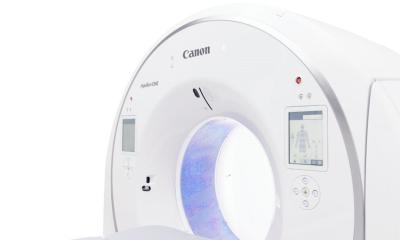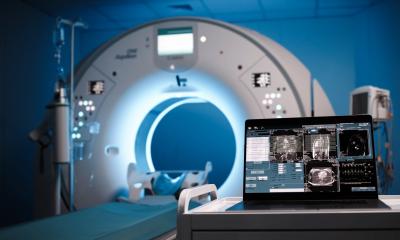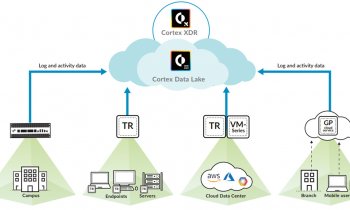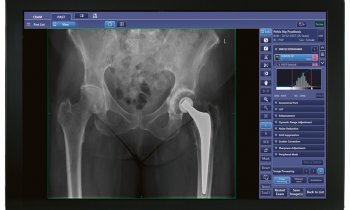© peterschreiber.media – stock.adobe.com
Article • Reducing radiology's environmental footprint
Healing without harming: Radiographers' path to sustainable imaging
What if every radiographer could help combat climate change while performing their daily work? Following the congress theme of ECR 2025, experts revealed how small changes – from education initiatives to simple workflow adjustments – can collectively transform the environmental impact of radiology.
Special report: Cynthia E. Keen
For the 20,000 in-person attendees at ECR 2025 in Vienna, the conference's theme “Planet Radiology” was unmistakable. Throughout the event, participants were consistently encouraged to consider the environmental impact of medical imaging and the responsibility of radiology professionals and vendors to adopt more sustainable practices. Radiographers, in particular, can significantly influence environmental sustainability through “green” clinical practices, though many need greater awareness of their potential contributions.
Recommended article

Article • Congress preview
ECR 2025: Welcome to Planet Radiology!
Science, sustainability, and society – these are the three cornerstones of this year’s European Congress of Radiology (ECR) in Vienna, Austria. Following the motto “Planet Radiology”, the congress focuses on the environmental impact of diagnostic imaging while exploring ways to advance equitable global healthcare access.
The Hippocratic principle “to help, or at least to do no harm” extends beyond patient care to reducing the carbon footprint of medical imaging, the experts suggested. As Ana Luísa Soares, radiation therapist and dosimetrist at the Instituto Português de Oncologia do Porto, noted, ‘the healthcare sector is a major contributor to the climate crisis, representing 5% of the carbon footprint of global net emissions, equivalent to two gigatons of carbon dioxide. If it were a country, it would be the fifth largest in emitter on the planet.’ Citing the 2019 Health Care Climate Footprint Report from Health Care Without Harm, she pointed out that the European Union, China, and the United States collectively comprise 56% of the world's total healthcare climate footprint.1
Ms. Soares identified the major carbon footprint sources in radiology and radiation therapy departments: energy-intensive workstations, imaging devices, radiotherapy linacs, waste production, and patient transportation. She emphasized that ‘awareness and knowledge about sustainable practices in departments leads to changes in culture,’ adding that the work of radiographers makes them well-positioned to participate in hospital green teams tasked to identify wasteful practices and determine the feasibility of changing them.
Recommended article

Article • Developing a sustainability calculator
Tackling the eco-footprint of healthcare
There is a growing awareness of the healthcare sector’s adverse impact on the environment due to its emissions of greenhouse gases (GHG). A recent report from the non-profit organisation Health Care Without Harm (HCWH) finds that globally, healthcare is responsible for 4.4 % of total net GHG emissions.
Integrating eco-consciousness in radiography training
Elin Kjelle, PhD, Associate Professor at the University of South-Eastern Norway in Drammen, teaches radiography at both bachelor's and master's levels. She observed that while student radiographers are concerned about climate change and believe imaging department practices can and should be improved, they often lack knowledge about specific actions and their role in sustainability initiatives.
Several barriers to establishing more sustainable practices were identified, including:
- Insufficient management support for green practices
- Limited authority to implement departmental changes
- Resistance from some colleagues
- Resource constraints, both in terms of time and funding
- Coordination challenges between hospital departments
- Communication issues with external physician referrals regarding unnecessary procedures
We already teach the quality improvement cycle, so it should be easy to incorporate sustainability improvement cycles as well
Elin Kjelle
Dr Kjelle illustrated a straightforward sustainability example: questioning clinically unnecessary imaging exams. Could routine inpatient exams be performed less frequently without compromising care? Is the use of contrast agents always necessary? The expert emphasized that imaging should only be performed when there is a high risk to patient health without it and when the exam provides significant value to current treatment.
She further recommended incorporating sustainability training into radiographer education at all levels. ‘Radiographers need to learn more about healthcare sustainability. It should be incorporated into systematic quality improvement thinking. We already teach the quality improvement cycle, so it should be easy to incorporate sustainability improvement cycles as well.’
This academic training should also be supported during the students’ clinical placements, she argued. At this stage, they can identify wasteful practices in energy consumption, waste disposal, recycling, and patient scheduling relating to travel. To complement this, she appealed to clinical managers to demonstrate sustainability principles through example and openness to new ideas.
Reducing the carbon footprint
Nicolò Sean Chiodini, a nuclear medicine radiographer at Ospedale San Raffaele in Rozzano, Italy, acknowledged the unique sustainability challenges facing nuclear medicine departments but highlighted overlooked protocols that could make significant contributions.
Simple measures include turning off display monitors and putting unused workstations into “sleep” mode during off-hours, potentially achieving 70% energy savings. Similarly, PET and CT modalities can use “energy saving” modes. Referencing a 2023 study from Dutch hospitals, he pointed out that energy-saving modes resulted in approximately 30% energy savings and a 0.94 kg CO2-eq emission reduction per hour. In addition, proper waste separation for paper and plastics could reduce CO2-eq emissions by approximately 64% per nuclear medicine procedure.2
Mr. Chiodini emphasized that cumulative small changes yield significant impact over time. He cited a manager who implemented an automatic injector system using only one needle, one cable, and one vial for radiotracers. He noted that proactive waiting list management for nuclear medicine treatments could prevent unused treatment suites and radiopharmaceutical wastage when patients miss scheduled appointments. By finding another patient due for the same treatment, sustainability improves, he pointed out.
References:
- Health Care Without Harm. Health care climate footprint report: Executive Summary. Published 10 March 2019. https://global.noharm.org/media/4361/download?inline=1.
- Arzt, Laura. Environmental impact of PET/CT imaging: a focus on energy consumption, waste generation and radio pharmaceutical production. 31 October 2023. Accessed at: https://repository.tudelft.nl/file/File_60388397-77e1-4313-a037-06550752984c?preview=1
02.06.2025










